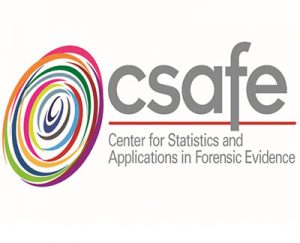The concurring opinion in Williams v. U.S., 2016— A.3d —-2016 WL 275301 (D.C. Ct. App. Jan. 21, 2016) is now available. Below are excerpts:
EASTERLY, Associate Judge, concurring:
In our adversarial system, we do not expect trial courts to “recognize on [their] own” that an expert’s testimony is “scientifically unorthodox or controversial.” (John ) Jones v. United States, 990 A.2d 970, 980–82 (D.C.2010). In the absence of any objection at Mr. Williams’s trial to the admission of the firearms and toolmark examiner’s certainty statements, we could only reverse if the law were clear that the expert could not make these statements. See supra Majority Opinion, Part II.B. As discussed above, the law in this jurisdiction does not clearly preclude a firearms and toolmark examiner from testifying with unqualified, absolute certainty. But it should.
A statement that markings on a bullet are “unique” to a particular gun is a statement that the probability of finding another gun that can create identical bullet markings is zero. If purportedly unique patterns on bullets are declared a match, that declaration likewise negates the possibility that more than one gun could have fired the bullets—it is a statement of unqualified certainty that the bullets were fired from a specific gun to the exclusion of all others. Here the firearms and toolmark examiner testified that he had identified matching “unique” patterns; he also declared that he did not have “any doubt” that the bullets recovered from Mr. Kang’s car had been fired by the gun recovered from Mr. Williams’s apartment.
The government has a policy, admittedly violated here, not to elicit such certainty statements. This court was advised of the government’s policy in Jones. At oral argument in that case, in November 2011, counsel for the government stated that, as “concede[d]” in its brief, it was the government’s “position that practitioners should not state their conclusions to 100% scientific certainty.” The government further noted that it had “conceded in every hearing, starting two to three years ago when we first started having Frye hearings on this issue, that firearms examiners should not state their conclusions with absolute certainty.”Id. Which raises the question: why did the government adopt a policy to limit the opinion testimony of firearms and toolmark examiners? What happened “two to three” years before the Jones oral argument that prompted the creation of this policy?
In 2008, a committee of scientists and statisticians assembled by the National Research Council (NRC),3 which was in turn acting at the behest of the Department of Justice, issued a report on bullet pattern-matching analysis, Ballistic Imaging.4 Although the NRC Committee’s charge was to assess the feasibility and utility of establishing “a national reference ballistic image database … that would house images from firings of all newly manufactured or imported firearms,” it recognized that the “[u]nderlying … question” is “whether firearms-related toolmarks are unique: that is, whether a particular set of toolmarks can be shown to come from one weapon to the exclusion of all others.” Ballistic Imaging, supra note 3, at 1, 3. The NRC Committee determined that there was no data-based foundation to declare, with any certainty, individualization based on toolmark pattern matching.
Specifically, the NRC Committee made a “finding” that the “validity of the fundamental assumptions of uniqueness and reproducibility of firearms-related toolmarks has not yet been fully demonstrated.” Ballistic Imaging, supra note 3, at 3, 81. The NRC Committee noted that “derivation of an objective, statistical basis for rendering decisions [about matches] is hampered by the fundamentally random nature of parts of the firing process. The exact same conditions—of ammunition, of wear and cleanliness of firearms parts, of burning of propellant particles and the resulting gas pressure, and so forth—do not necessarily apply for every shot from the same gun.” Id. at 55. The NRC Committee concluded that “[a] significant amount of research would be needed to scientifically determine the degree to which firearms-related toolmarks are unique or even to quantitatively characterize the probability of uniqueness.” Id. at 3, 82.
The NRC Committee further expressed concern that, notwithstanding the absence of data and the corresponding statistical unknowns, firearms and toolmark examiners “tend to cast their assessments in bold absolutes, commonly asserting that a match can be made ‘to the exclusion of all other firearms in the world.’ “ Ballistic Imaging, supra note 3, at 82. The NRC Committee denounced this sort of testimony, explaining that “[s]uch comments cloak an inherently subjective assessment of a match with an extreme probability statement that has no firm grounding and unrealistically implies an error rate of zero.” Id. “[S]topping short of commenting on whether firearms toolmark evidence should be admissible” in court, the NRC Committee determined that “[c ] onclusions drawn in firearms identification should not be made to imply the presence of a firm statistical basis when none has been demonstrated.” Id. (emphasis in original).
In a subsequent report commissioned by Congress and issued in 2009, Strengthening Forensic Science in the United States: A Path Forward,5 another NRC Committee published similar words of warning regarding firearms and toolmark evidence.6 This Committee explained that “[i]ndividual patterns from manufacture or from wear might, in some cases, be distinctive enough to suggest one particular source.” Id. at 154 (emphasis added). But “[b]ecause not enough is known about the variabilities among individual tools and guns,” the Committee was “not able to specify how many points of similarity are necessary for a given level of confidence in the result.” In other words, there is currently no statistical basis to declare with any degree of certainty that toolmarks on a bullet connect that bullet to a particular gun or “match” the markings on other bullets fired from that gun.
Against this backdrop, there is only one permissible answer to the question left undecided in Jones regarding firearms and toolmark examiners’ assertions of certainty in their pattern-matching conclusions: the District of Columbia courts should not allow them. It is well established that expert opinion evidence is admissible if “it will not mislead the jury and will prove useful in understanding the facts in issue.” Clifford v. United States, 532 A.2d 628, 632 (D.C.1987) (citing Dyas v. United States, 376 A.2d 827, 831 (D.C.1977)); cf. Daubert v. Merrell Dow Pharmaceuticals, Inc., 509 U.S. 579, 589 (1993) (“[T]he trial judge must ensure that any and all scientific testimony or evidence admitted is not only relevant, but reliable.”). Certainty statements such as those elicited by the government in this case are misleading and lack any legitimate utility in criminal trials; they express a solid statistical foundation for individualization that does not currently (and may never) exist.
The government states in its brief to this court that it is “regrettable” that its expert was permitted to state his pattern-matching conclusion with absolute certainty. It is more than regrettable. It is alarming. We know that faulty forensic evidence, and in particular, objectively unfounded statements of certainty regarding forensic analysis, can contribute to wrongful convictions. See Strengthening Forensic Science, supra note 5, at 45; Brandon L. Garrett, Judging Innocence, 108 Colum. L.Rev. 55, 83–84 (2008).
Take the case of Donald Gates, who was wrongfully convicted of rape and murder and needlessly served twenty-seven years in prison. To persuade a jury of Mr. Gates’s guilt, the government relied on the similarly subjective pattern-matching analysis of hair evidence. The hair examiner in Mr. Gates’s case testified with only slightly more restraint than the firearms and toolmark examiner in this case, acknowledging that “it cannot be said that a hair came from one person to the exclusion of all others,” but nonetheless asserting that it was “ ‘highly unlikely’ that the hair found on the victim came from someone other than [Mr. Gates].” Brief for Appellee at 8, Donald E. Gates v. United States, 481 A.2d 120 (1984) (No. 82–1529) (transcript citations omitted). But, just as in this case, there was no data-based foundation for the expert’s expression of certainty in his opinion.10
The use of these subjective certainty statements not only implicates the government’s “duty to refrain from improper methods calculated to produce a wrongful conviction,”11 it also calls into question the “fairness, integrity [and] public reputation of judicial proceedings.” Courts are our society’s chosen forum for ascertaining guilt in criminal cases. Our justice system can only function if it maintains the trust of the community. We rely on judges—as the umpires in our adversarial system—to prohibit the admission of evidence that is clearly without foundation. As matters currently stand, a certainty statement regarding toolmark pattern matching has the same probative value as the vision of a psychic: it reflects nothing more than the individual’s foundationless faith in what he believes to be true. This is not evidence on which we can in good conscience rely, particularly in criminal cases, where we demand proof—real proof—beyond a reasonable doubt, precisely because the stakes are so high. To uphold the public’s trust, the District of Columbia courts must bar the admission of these certainty statements, whether or not the government has a policy that prohibits their elicitation. We cannot be complicit in their use.


Leave a Reply